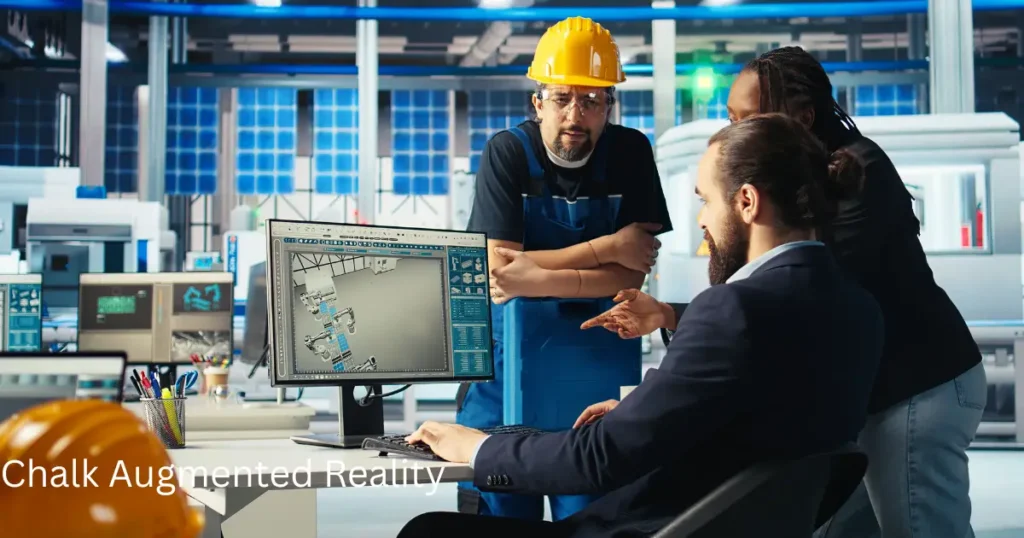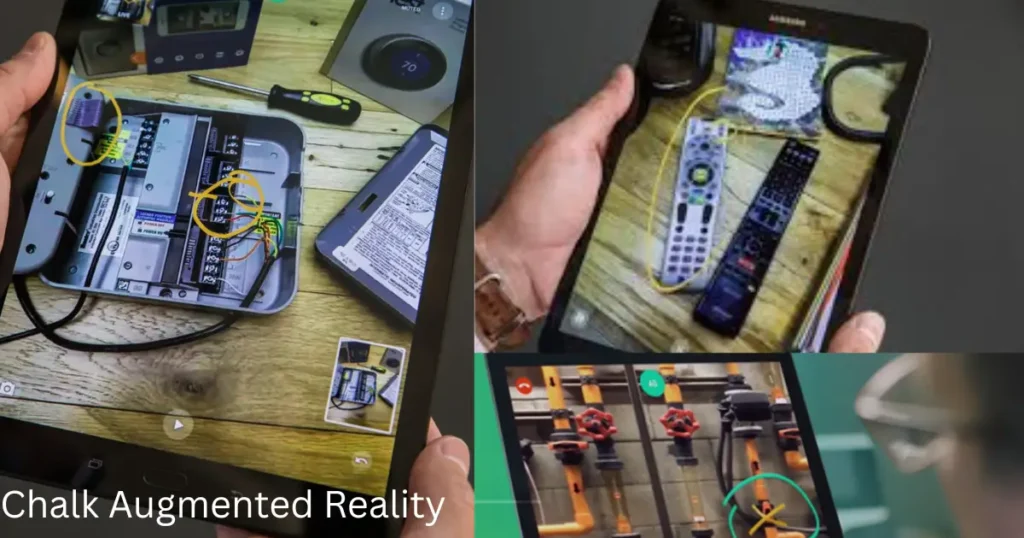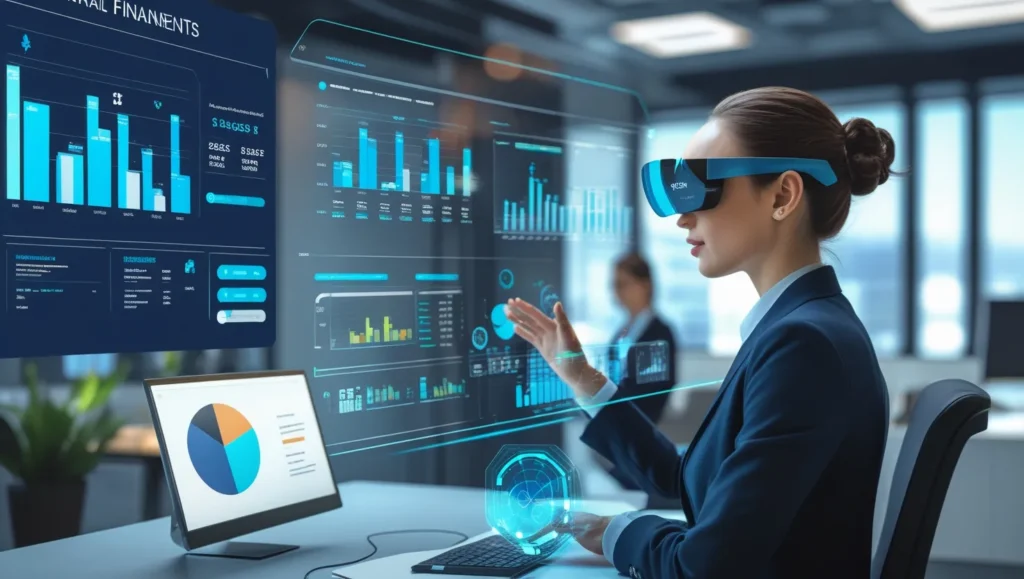
The concept of Chalk Augmented Reality emerged as a way to merge real-time communication with spatially anchored visual guidance. Powered by Vuforia Chalk, a product developed by PTC Inc., this technology has transformed how industrial teams, service engineers, and trainers collaborate remotely. Unlike many AR tools that rely on complex headsets, Chalk runs on smartphones and tablets, making augmented collaboration widely accessible and easy to adopt.
About Chalk Augmented Reality
What Chalk AR Actually Does
Chalk AR allows an on-site technician to share a live video stream from their device with a remote expert. Both participants can draw on the screen, creating digital “chalk marks” that stay anchored to real-world objects even when the camera moves.
This alignment of marks with 3D geometry is made possible by Vuforia’s computer-vision engine, a technology recognized for its ability to detect and track real-world surfaces. The result is an intuitive form of communication where verbal explanations are replaced by direct visual cues.
Why It Matters
Traditional remote support through phone calls or photos leaves room for miscommunication. Chalk AR closes that gap by giving both the expert and the field technician the same visual perspective. This shared view shortens problem-solving cycles and reduces the cost of deploying experts on-site.
Industrial Use

Manufacturing and Equipment Service
Rockwell Automation adopted Vuforia Chalk to maintain production continuity during travel restrictions. Their report shows that remote AR collaboration enabled faster problem resolution and minimized downtime.
In a similar fashion, Howden, a global engineering company, used Chalk to assist service engineers across multiple countries. By providing visual remote guidance, Howden reduced expert travel while maintaining consistent support quality.
Automotive Industry
Toyota Motor Corporation implemented Chalk to connect remote engineers with on-site technicians during complex maintenance tasks. According to PTC’s published case, Toyota improved its internal communication speed and reduced repeat visits.
Factory-to-Factory Collaboration
DP Prakash, Head of Innovation at Global Foundries, noted that Chalk “improves within-factory and factory-to-factory communications and allows us to renegotiate how vendor contracts are structured.” This underlines how remote AR guidance can create measurable business efficiencies
Core Benefits of Chalk AR
Reducing Operational Costs
By eliminating the need for experts to travel, companies save significant time and expenses. Chalk enables real-time support from skilled professionals anywhere in the world.
When machines are down, every hour counts; Chalk’s remote diagnostics allow teams to resume operations faster, improving the first-time-fix rate a metric service industries track closely PTC Remote Assistance Solutions.
Accelerating Technician Training
Training new technicians typically requires side-by-side supervision. Chalk changes that: experienced engineers can mentor remotely, marking parts directly in the trainee’s field of view
This visual mentorship method supports higher knowledge retention, aligning with findings from digital learning research showing that visual cues improve procedural learning efficiency.
Improving Service Quality
Because annotations stay anchored where they are drawn, experts provide precise, repeatable instructions. This minimizes ambiguity, especially in high-stakes environments such as power-plant maintenance or aerospace assembly.
Technical Overview

Platform and Device Support
Vuforia Chalk runs on iOS 11 + and Android 6.0 + devices, plus web browsers such as Chrome, Edge, and Firefox for desktop access.
It works entirely through standard mobile hardware, avoiding the steep cost of specialized AR headsets.
Connectivity Requirements.
For high-quality video, a 2.0 Mbps connection is recommended, though it can operate at a minimum of 500 Kbps
This flexibility makes it practical even in moderate-bandwidth industrial environments.
Availability and Trial Program
PTC offers enterprises a 30-day evaluation with access for up to 50 users, including full administrative controls and community support
Enrollment is managed through chalk.vuforia.com.
Implementation and Best Practices
Planning a Pilot
- Define scope: Choose a recurring maintenance or inspection process.
- Train staff: Demonstrate annotation anchoring and camera scanning.
- Measure KPIs: Record time-to-resolution, first-time-fix rate, and travel cost.
- Scale gradually: Once ROI is proven, extend to more teams or facilities.
Field Tips for Success
- Maintain good lighting; AR tracking relies on visible surface features.
- Ensure steady internet; packet loss can cause misaligned annotations.
- Use a consistent annotation color scheme, for instance, red = attention, green = verified step.
- Record sessions to build a library for training or audits.
Limitations and Lifecycle Status
Adoption Challenges
Some technicians find scanning the environment or managing camera perspective unfamiliar at first. Small pilot programs and quick-reference guides ease this learning curve.
Product Lifecycle Update
As of July 2025, PTC’s App Store listing states:
“FYI: Chalk will be ceasing operations on Fri, October 31, 2025.”
PTC and Care AR (a Xerox company) have since confirmed that Chalk is reaching end of life, with CareAR Assist positioned as its successor.
Organizations currently using Chalk should plan transition paths to alternative AR-assistance tools to maintain support continuity.
Broad Industry Context
Growth of AR Remote Assistance
Research by Deloitte (2023) and Markets and Markets (2024) projects steady expansion in AR remote-assistance platforms, with compound annual growth rates exceeding 25% through 2030. The main drivers are workforce shortages, travel cost reduction, and faster equipment uptime.
Scientific Support for AR Training
Academic studies show that augmented reality improves spatial understanding and reduces cognitive load in complex technical tasks. Chalk’s interface design aligns with those findings, embedding visual cues directly in the real environment rather than requiring abstract mental mapping.
Future of Chalk-Style AR Solutions
Integration with Smart Glasses and IoT
Although Vuforia Chalk itself is sunsetting, its underlying model is expected to evolve. Future AR systems are likely to integrate with wearable displays and IoT-connected sensors, providing not just annotations but live data overlays (temperature, pressure, machine health) during remote support.
AI-Enhanced Troubleshooting
Emerging research in AR and AI suggests upcoming systems could automatically identify equipment types or detect anomalies before a human expert intervenes. Early prototypes in this area are discussed in IEEE Access (2024), showing how AI-assisted AR may extend beyond manual annotation.
Conclusion
Chalk Augmented Reality demonstrates that AR doesn’t need to be futuristic or complex to deliver real value. By combining real-time video with anchored visual cues, Vuforia Chalk helped organizations like Toyota, Rockwell Automation, and Howden transform remote collaboration into a hands-on experience without requiring physical presence.
While the platform is approaching end-of-life, its legacy defines a clear blueprint for the next generation of remote assistance and digital training tools. As industries continue to seek cost-effective, human-centered AR solutions, the “chalk-and-talk” model will remain one of the most practical applications of augmented reality ever deployed.
FAQs
What is Vuforia Chalk?
Vuforia Chalk is an augmented reality remote-assistance tool developed by PTC Inc. It lets field technicians and remote experts share a live video feed and draw annotations that stick to real-world objects, enabling visual, real-time guidance without physical presence.
What are the four types of augmented reality?
The four main types of AR are:
- Marker-based AR (uses visual triggers like QR codes),
- Markerless AR (relies on GPS or sensors),
- Projection-based AR (projects digital light onto surfaces), and
- Superimposition-based AR (overlays digital objects onto the real view)
What is augmented reality?
Augmented Reality (AR) blends digital information such as images, text, or 3D models into the real world in real time. It enhances a user’s perception by overlaying computer-generated content onto their physical surroundings (Milgram & Kishino, Mixed Reality Taxonomy, 1994).
Can I create my own augmented reality?
Yes. Platforms like Unity with Vuforia, ARCore (Google), and ARKit (Apple) allow creators to build AR apps using prebuilt SDKs. These tools let users design AR scenes without specialized hardware (Unity Technologies documentation; Google ARCore Developers Guide).
Is coding required for AR builders?
Not always. While custom AR apps may need programming in C# or JavaScript (for Unity or Unreal Engine), no-code AR builders like ZapWorks, Blippar, or Adobe Aero enable drag-and-drop creation without coding (Forbes Tech Council, 2023).
Does augmented reality need AI?
AI is not required, but it enhances AR significantly. It improves object recognition, tracking, and interaction, making experiences more adaptive and context-aware. Many modern AR apps integrate AI for scene understanding.
Do I need special hardware?
Not necessarily. Many implementations work on standard smartphones or tablets. If you want hands-free or headset mode, you’ll pay extra.
What happens after Oct 31, 2025, for Chalk users?
You’ll need to migrate to an alternative or upgraded platform. So, if you’re buying now, ensure your contract or vendor covers migration.
How secure is the data?
Security is key in these remote sessions (video, annotations, possibly industrial secrets). The underlying AR platform emphasises data security and protocols.
Can I integrate with my service/CMMS system?
Yes. For maximum value, you should integrate remote-AR sessions with service tickets, asset logs, and documentation systems, so the “virtual assist” becomes part of your workflow not isolated.


